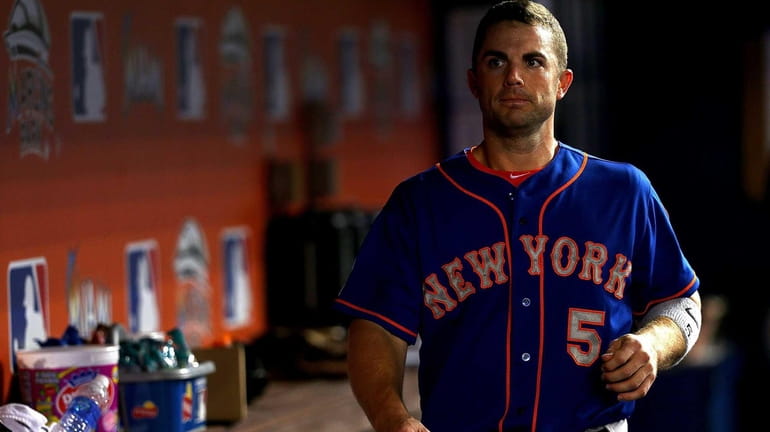Why did Mets wait to send David Wright for follow-up MRI?

The Mets' David Wright looks on during a game against the Miami Marlins at Marlins Park on Sept. 3, 2014 in Miami. Credit: Getty Images / Mike Ehrmann
Thanks to the results of a dye-contrast MRI exam, which revealed damage to the ligaments in his banged-up left shoulder, Mets third baseman David Wright could speak with greater clarity about the injury that marred his season.
But he didn’t undergo the test until after he was shut down for the remainder of the season, prompting a question that was asked a few times Wednesday night on social media.
What the heck took the Mets so long?
The answer may be complicated. Or, rather, complications.
Dye-contrast MRI exams can provide a more detailed picture than typical MRI exams. Because of the dye used in the procedures, ligament tears can be made more visible, thus easier for doctors to spot.
That added clarity, however, comes with a major trade-off.
According to sports injury expert Will Carroll, the nature of the dye that is used can make for a rough experience. And generally, he said teams balk at subjecting their players to any kind of invasive procedure unless absolutely necessary.
One example came in 2012, when in his first spring training with the Yankees, Michael Pineda battled what had been called tendinitis in his shoulder. Only after he was forced to leave an extended spring training start in late April did Pineda undergo a dye-contrast MRI. The test revealed a torn labrum that required surgery.
Carroll noted several issues related to dye-contrast MRI exams, an experience that Wright described as “uncomfortable.”
-- The dye used can cause allergic reactions in some people.
-- The process if often painful, particularly for those going through it for the first time. In some cases, the the dye is administered with a large needle.
-- The addition of fluid can put additional pressure on joints.
-- It can take about three days for the dye to clear the system.
Had Wright undergone a dye-contrast MRI exam earlier in the season, he likely would have been sidelined for several games at least. With Wright continuously insisting on playing, that wasn’t going to fly.
Perhaps, Wright could have had the exam during the All-Star break, not long after shoulder pain forced him out of the lineup for the first time. But could discomfort be enough to trigger such an invasive test after an standard MRI exam initially revealed only a “bruised rotator cuff”?
Wright ultimately opted instead for a cortisone injection during the All-Star break, which merely dulled the pain temporarily. By Sept. 9, shoulder discomfort prompted yet another standard MRI exam, which the club said revealed “persistent inflammation in the rotator cuff.” It was enough to finally shut down Wright for the season.
Later, Mets general manager Sandy Alderson acknowledged the possibility of a dye-contrast MRI exam, “just to take a look at the shoulder generally.”
That look wound up showing ligament damage that may require surgery, a fate Wright hopes to avoid with a shoulder strengthening rehab program. In the Mets clubhouse on Wednesday night, he laid out his injury in detail.
Wright’s impromptu demonstration began when he balled his left hand into a fist, signifying the joint in his balky left shoulder. With this right hand, he covered the fist as if to hold it tightly in place, no different than what healthy shoulder ligaments are supposed to do.
Then, Wright loosened his right hand, and wiggled his left freely.
He did this as he described the state of the ligaments in his left shoulder, using words such as “damaged” and “stretched out.” With that, he offered a synopsis of the sobering reality that the dye-contrast MRI exam finally revealed.
Said Wright: “The shoulder’s rolling around and not stable.”
